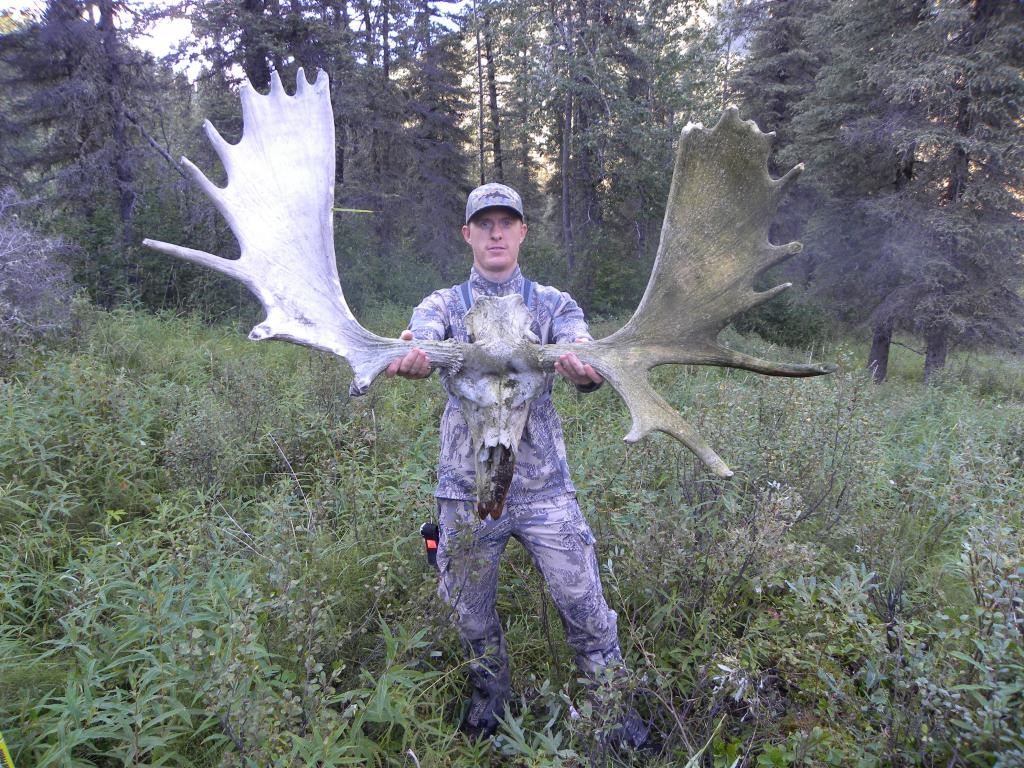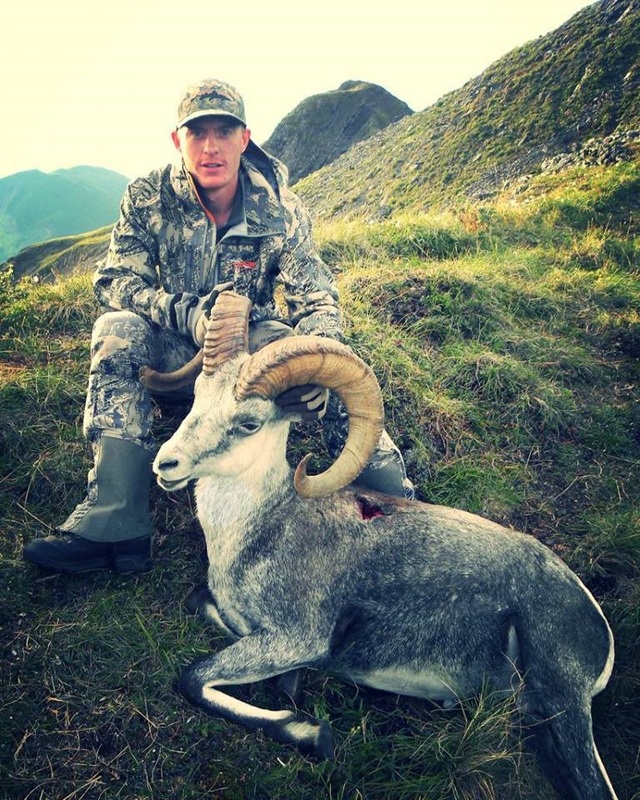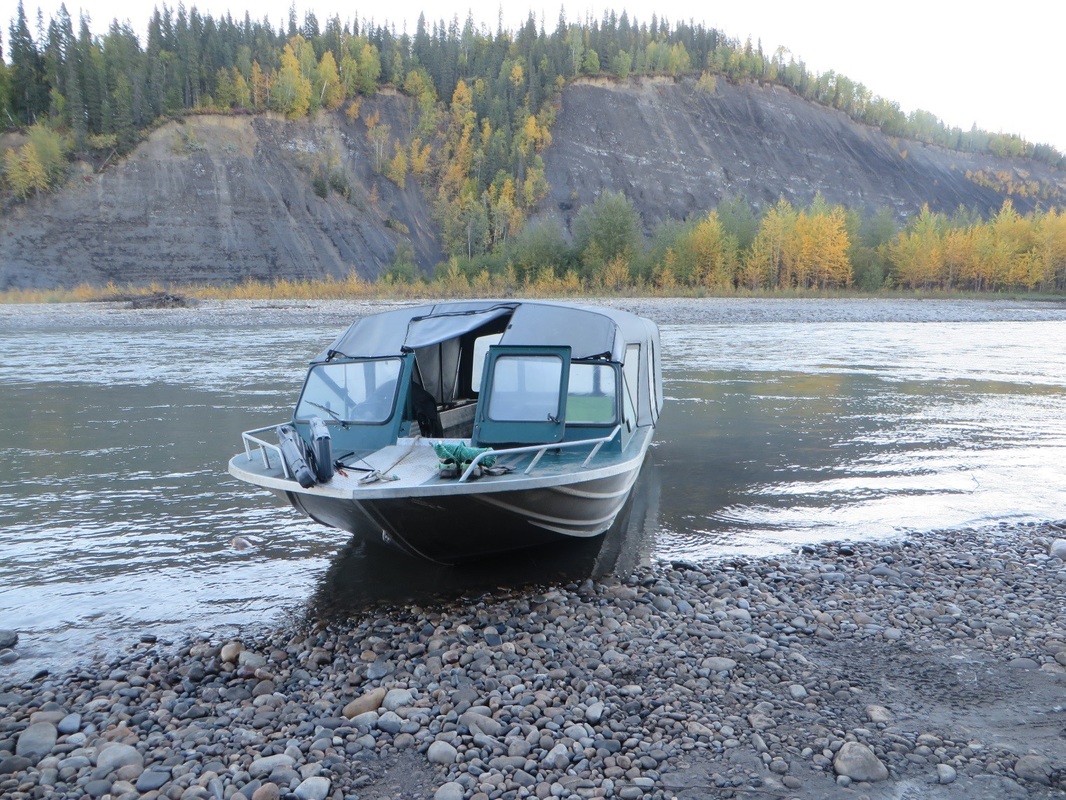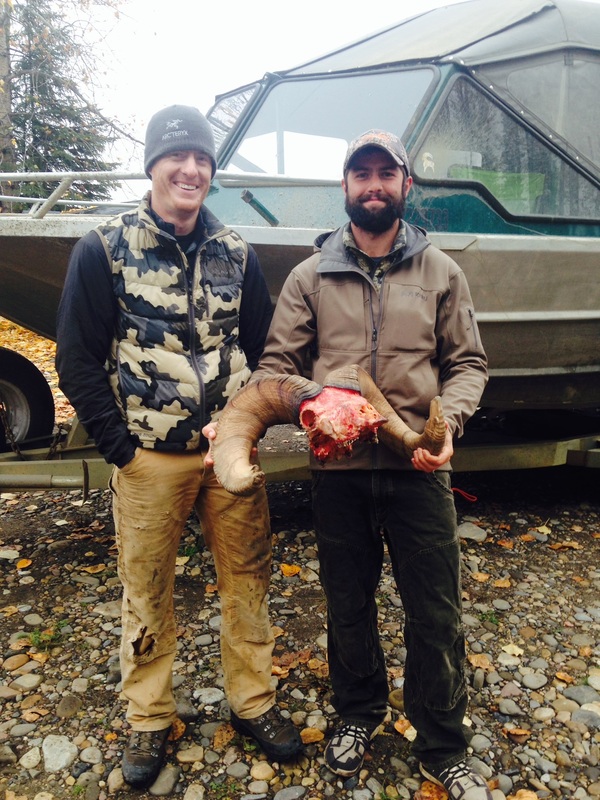It’s cold. The pain in my face has subsided after long days of working in the blowing snow, but Northern Alberta has finally afforded me the chance to do what I’ve been dreaming of for years and, after a quick phone call on a coffee break I’ve booked a packer to take myself and a friend deep into Northern BC Stone Sheep territory…the dream has become reality.
The range of the Stone Sheep is fairly concentrated. They are found in the top third of British Columbia, and into the southeastern corner of the Yukon. Their preference for remote, untouched regions of the country dominated by alpine and sub-alpine terrain, separated by heavily forested valleys or plateaus have earned the Stone sheep the reputation, at least in the eyes of many hunters, of being one of the hardest of the North American sheep species to hunt. And for years, they were all I could think about.
Fast forward 6 months. With 17 hours of driving behind us, we are loading the jet boat that will take us up the Muskwa River into the places I have been dreaming about for years. Dreams fueled by online stories, books from the great Jack O’Connor and first-hand accounts from old timers who packed into these same areas on horseback.
There were months of planning; packing, and re-packing the gear; training runs with weight on our backs and squatting until we puke. Now, finally the moment had arrived and we’d reached the beginning of our adventure. It had been a two year odyssey to arrive in sheep country.
Hours later the sound of the jetboat motor fades down the canyon and is replaced by the song of the wild. We are alone in the pristine wilderness of Northern British Columbia. We hang some supplies in a tree and set off. No trail, no familiarity, just 10 days and countless kilometres ahead.
No one warned us about the black spruce death marches that were full of bugs and we soon learn to work with Nature not against her so we resort to walking straight up a shallow creek to avoid the thinly spaced snags. After hours of slogging through a hip deep swamp and dark timber, we blissfully break into the sub-alpine. We had hoped to be in hunting country by now, but these first kilometres have punished us. Sometimes, no matter how much preparation you put in, Nature has a way of reminding you that it’s never enough. In nearly every draw we walked through we’d find sheds, dead heads and skeletons. The wolves were clearly in charge here in the winter.
A few hours later we found a small mountain spring just below timberline and set up camp. From here we could see up the valley towards the jagged peaks and the ridge line we planned to hunt. Camping beside water has advantages, but we would need to climb for nearly an hour every day to begin glassing. That didn’t matter, though. This is why we were here. Smiling, and without saying a word, we loaded up our day packs and set out with a fast pace into a saddle that we had spied from below.
Not long into glassing my partner has eyes on some movement a few kilometers away.
“I got sheep,” he says.
How could we be so lucky? Ten minutes in and we are glassing some young rams up top. WAY up top.
“Big ram, skyline,” my partner spoke the most blissful words I’ve ever heard while hunting.
I turn the spotter to see my first Stone ram perched in his bed on the edge of a cliff an easy 3 km away.
With the inexperienced zeal of first time sheep hunters we dashed out to cross the valley, practically sprinting through the timber and straight up the peak. We blew the stalk when we jumped the ram at 20 yards. Both of us staring at him unable to determine his age or curl. A blocky old ram, chocolate in colour his majestic horns glinting in the afternoon sun.
This lethally choreographed ballet would continue over the next three days: glass, ascend, stalk, descend, repeat.
Day five was a defining moment in my lifetime of hunting. We settled into our glassing saddle with a log we used to rest on while scanning the peaks. It seemed the rams were sticking to the summit. We couldn’t turn up anything, so we side-hilled down valley to a steep chute. We clawed our way skyward, stopping to eat high mountain blueberries and strawberries along the way. At the summit the horizon was filled with clouds erupting with bolts of lightning and shotgun loud thunder. We retreated under a few small firs crouched on the balls of our feet. The flashes and noise of those moments will stay with me the rest of my life.
No words were spoken between us and, as soon as we had a break in the lightning we tucked tail back down the chute. It was now 4 p.m. and we were mentally and physically exhausted. I glassed three rams right at the top of another narrow deep chute and a few more came into view on the skyline. We determined if we made our ascent straight up underneath them, and managed to edge our way up a rocky outcropping, we might be able to get in tight.
At the top, we peered over the edge. One, two, three, four, five, six. There were more than 12 rams bedded together 60 yards away and 50 feet below us on a knife edge ridge that extended into a small narrow saddle. We had drawn straws to see who had first crack at a ram and I had lost, so it was my partner’s call. I would drop 20 yards lower on the edge to get a better view of what rams would be legal and my partner would keep his crosshairs trained on what we figured was the oldest ram.
An hour passed before I was sure. I gave him the okay to fire, and to my surprise, he said he didn’t have a shot and told me to shoot. I urged him to slip down to where I was. I had a perfect angle on the bedded monarch. He got half way down, but the rams were getting nervous.
“Shoot him,” he said.
He assured me it was okay. I settled behind my scope, found the mark and pulled the trigger. I had just killed my first Stone ram, something I thought might never happen.
Walking back in the dark to camp I barely noticed the weight of it all. I stayed up until 2:30 a.m. caping the ram by the firelight. I hardly remember hanging the slate grey cape. When I awoke I had to walk to the creek where I sunk the skull to make sure it was real.
We spent the next five days chasing sheep with many close encounters and blown stalks, but it wasn’t meant to be. We made our way back to the river, basking in the magnitude of our first sheep hunt and relishing every moment: having a stand-off with a six year-old ram at 5 yards, roasting tenderloin over the fire and watching the high mountain kings bashing horns at sunset. I knew that I owed my partner a bigger debt than I have ever carried.
I would go to any length to get him his ram, which is exactly what I did the following year…
We had set off up river on a route that would take us a total of 40 miles through pristine sheep country: 28 creek crossings, high-walled canyons and glacier cold streams. We were relentless and chased rams we glassed on distant peaks from one drainage to another. It didn’t matter what it took, we were determined. We blew stalks, but we learned from each mistake, and we persevered. We listened to the song of September, the screaming bulls in the timber. We shivered in the morning winds, glassed countless young rams, and pressed on.
Nine days in, we had a herd of rams bedded in the cliffs 500 yards away, too far a shot for either of us. It seemed like hours until he walked out, black cape and white face, his broomed and cracked horns illuminated by the evening sun. I had honoured my word and with the crack of a rifle, another Stone fell and my debt was repaid. We carried that ram 25 km down river to our base camp, six of those kilometers in the dark. It was the most painful, arduous 24 hours of my life and I was grateful for every minute of it.
Back at basecamp we ate sheep meat for breakfast and drank whiskey while we tossed flies at arctic grayling and bull trout. When we heard the familiar sound of our ride powering upstream it was a bittersweet reminder of the world we’d left behind.
We were sad to leave this sacred place, but glad to be en route to family and a warm bed. Despite our exhaustion, we vowed to return and climb again.









